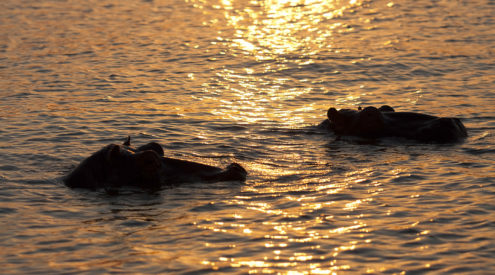Estuarine ecosystems ebb and flow with the rhythms of life. They’re sensitive sponges of diversity and delicate buffers of change. South Africa’s long coastline is richly strung with estuaries, like a sparkling necklace of pearls, and each is a haven for bird-watchers and birds. Estuaries seem to pulse with the seasons, changing and boasting birds at every turn.
It’s difficult to establish which of the country’s estuaries is the most important for birds because of the varying habitats, but certainly the most spectacular is the system at St Lucia in iSimangaliso Wetland Park on the northern KwaZulu-Natal coast. This World Heritage Site is a globally renowned birding hotspot. In summer you can enjoy large numbers of migratory waders such as terek and curlew sandpiper and the little stint. In the skies above, ospreys wrestle and African fisheagles cry territorially as barn swallows and blue-cheeked bee-eaters flicker above treeedged lagoons. All year round, residents such as grey heron and black-winged stilt step daintily through the shallows.
If you move south along the coast, where mangroves give way to reeds and bushy banks, you’ll be amazed at the constant avian richness. Soft sandy spits make ideal roosting sites for terns and gulls and often these beaches lie feathered in the bright whites of mixed flocks of sandwich, common and swift terns and kelp gulls sit hunched and content in paradise – marvel as the birds all take to the sky together like confetti on a wedding day. Birders love these roosts because sometimes within them hides a rarity and perhaps you’ll be lucky to spot a vagrant elegant tern or a strange, lost black-headed gull.
Estuaries have a transitory nature and a dynamic personality. Water drifts and morphs from saline to fresh and back again. As you walk their edges, you’ll be repeatedly stunned by subtle changes in habitat. One minute you’re on a noisy beach of African black oystercatchers and white-fronted plovers. The next moment you’ll notice a stillness as a half-collared kingfisher dashes iridescently from the shade of an overhanging branch and a ripple reveals the solitary paddle of a secretive African finfoot and all has become magically riverine.
To watch the array of birds in an estuary is to see a vulnerable and beautiful world, an unfolding of all that’s in balance and all that is truly at peace in appropriate flux.
BirdLife supports estuarine environments
Estuarine environments are critically important nurseries and breeding grounds for rare and threatened bird species as well as key sites for summer migrants. Through the organisation’s Important Bird Areas (IBA) programme, it’s working with local stakeholders to develop stewardship models that will result in sustainable utilisation of these areas, many of which are under huge threat from property developers, mining houses and urban sprawl.
Visit their website, www.birdlife.org.za, for more information.
(Photo from iStockphoto.com)
















